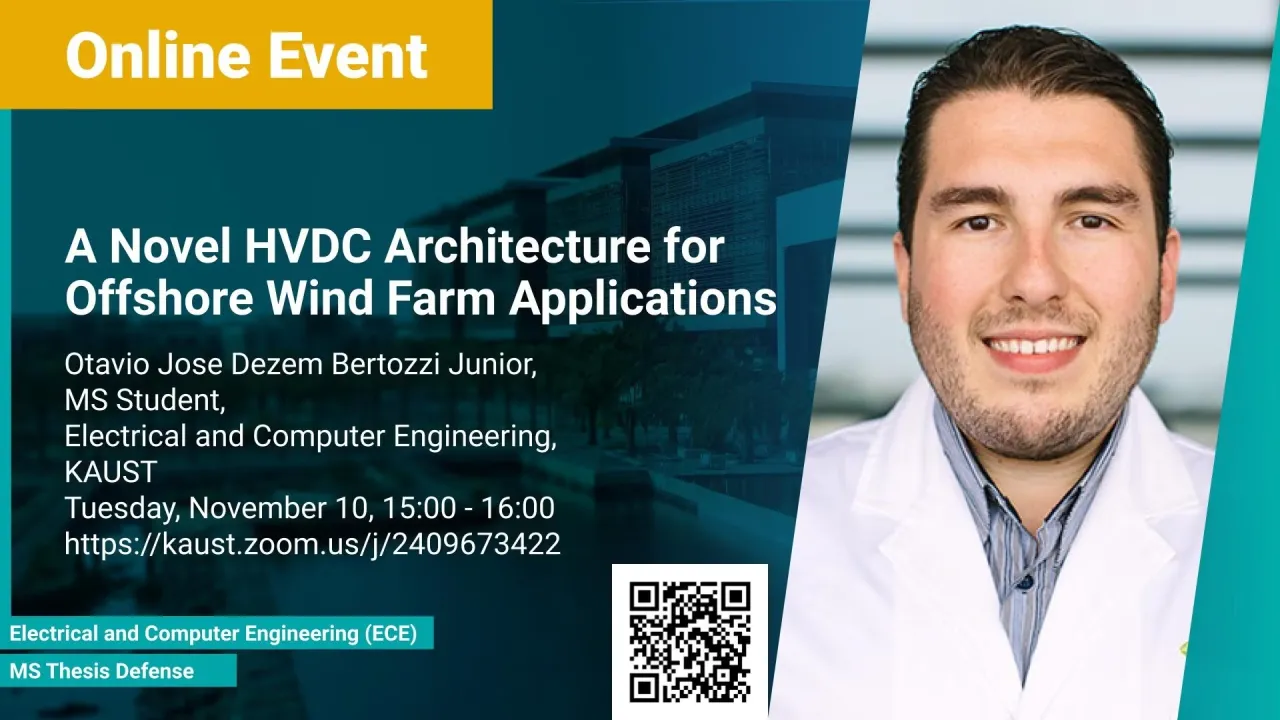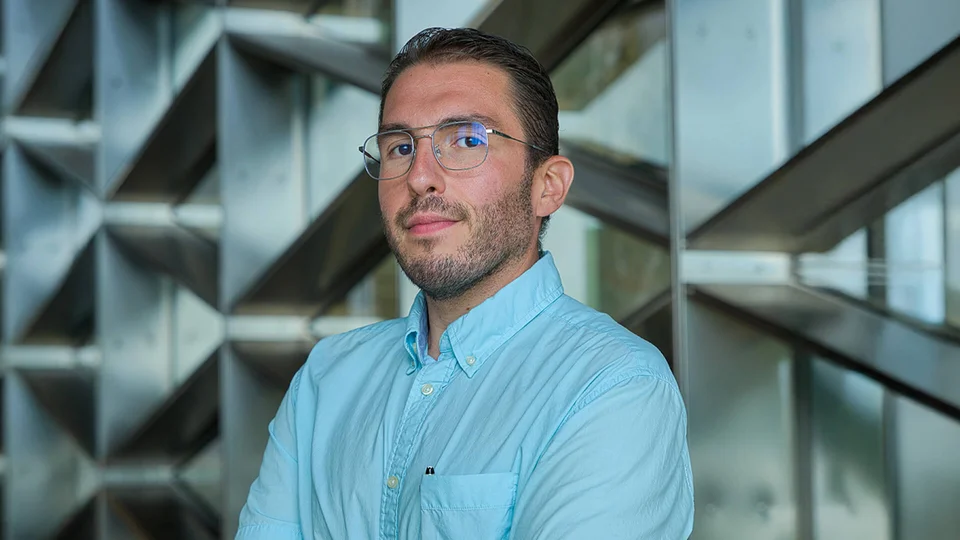
A Novel HVDC Architecture for Offshore Wind Farm Applications
- Otavio Dezem Bertozzi Junior, MS Student, Physical Science and Engineering
KAUST
Advances in power electronics have enabled many renewable energy applications. Wind energy harnessing is very promising and offshore farm installations have grown considerably in the past years. In this thesis, we introduce a novel power converter solution for the parallel connection of high-power offshore wind turbines, suitable for HVDC collection and transmission. For the parallel operation of energy sources in an HVDC grid, DC link voltage control is required. The proposed system is based on a full-power rated uncontrolled diode bridge rectifier in series with a partially-rated fully-controlled thyristor bridge rectifier. The thyristor bridge acts as a voltage regulator to ensure the flow of the desired current through each branch, where a reactor is placed in series for filtering of the DC current. AC filters are installed on the machine side to mitigate harmonic content. The mathematical modeling of the system is derived and the control design procedure is discussed. Guidelines for equipment and device specifications are presented. The concept is validated through simulation, and an experimental framework for testing of the system is suggested.
Overview
Abstract
Advances in power electronics have enabled many renewable energy applications. Wind energy harnessing is very promising and offshore farm installations have grown considerably in the past years. In this thesis, we introduce a novel power converter solution for the parallel connection of high-power offshore wind turbines, suitable for HVDC collection and transmission. For the parallel operation of energy sources in an HVDC grid, DC link voltage control is required. The proposed system is based on a full-power rated uncontrolled diode bridge rectifier in series with a partially-rated fully-controlled thyristor bridge rectifier. The thyristor bridge acts as a voltage regulator to ensure the flow of the desired current through each branch, where a reactor is placed in series for filtering of the DC current. AC filters are installed on the machine side to mitigate harmonic content. The mathematical modeling of the system is derived and the control design procedure is discussed. Guidelines for equipment and device specifications are presented. The concept is validated through simulation, and an experimental framework for testing of the system is suggested.
Brief Biography
Otavio Bertozzi started his M.Sc. in Spring 2019 under the supervision of Prof. Shehab Ahmed. He obtained his B.Sc. in Electrical Engineering from the Sao Paulo State University (Unesp). He was a Science Without Borders (CSF) undergraduate exchange student at the Budapest University of Technology and Economics (BME). He was an undergraduate intern at Intel Corporation's Connected Home Division (CHD) in Germany. His research interests are power electronics, renewable energy applications, and control systems.
